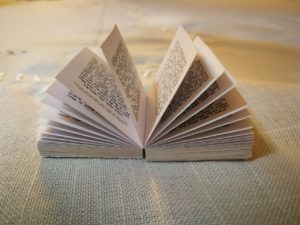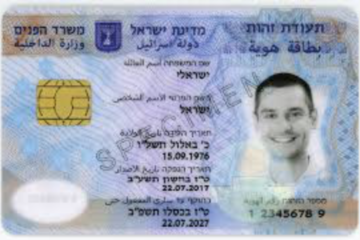
The question recently arose as to what one is expected to do if you witness an accident or arrive at scene of an accident in Israel shortly after the event took place. There are various different types of accidents and hence a number of options of what you could and should do. The exact nature of assistance you offer depends both on the situation and your knowledge or experience in first aid. In this post, we will share more about what you need to understand and what you need to do.
Witnessing an accident can be a shock to whoever saw it happen. Arriving at the scene of an accident immediately after it has happened can be a shock too. As a result, we decided to set to work to research and put together information as to what you should do. Being prepared helps to lessen the shock, and the best place to start is with information.
As mentioned, there are many types of accidents that can occur. This can be someone falling while walking. It can be someone falling off a bicycle or motorcycle. It can be an item falling onto a person or it can be a road traffic accident including one or more vehicles and either a pedestrian(s) or other vehicles.
The Legal Obligation
Becoming informed as to what you could or should do is not just general knowledge. In Israel there is actually a law that someone who sees another injured has to assist. As mentioned, the level and type of assistance expected of one, depends on what your experience is.
The Good Samaritan Law as outlined on Wikipedia (so not definitive):
“In Israel, the law requires anyone to assist a person in danger or at the very least call for help. People who help in good faith are not liable for damages. Helpers are eligible for compensation for damages caused to them during their assistance.”
Additional important information can be found further down the page, i.e. below the quote related to Israel:
“Good Samaritan provisions are not universal in application. The legal principle of imminent peril may also apply. In the absence of imminent peril, the actions of a rescuer may be perceived by the courts to be reckless and not worthy of protection. To illustrate, a motor vehicle collision occurs, but there is no fire, no immediate life threat from injuries and no danger of a second collision. If someone, with good intentions, causes injury by pulling the victim from the wreckage, a court may rule that good Samaritan laws do not apply because the victim was not in imminent peril and hold the actions of the rescuer to be unnecessary and reckless.”
“There exists a legal requirement for citizens to assist people in distress, unless doing so would put themselves or others in harm’s way. Citizens are often required to, at minimum, call the local emergency number, unless doing so would be harmful, in which case the authorities should be contacted when the harmful situation has been removed.”
For more regarding your duty to rescue and criminal law – see the Wikipedia entry.
As you can see there are two legal issues mentioned here. The “duty to rescue” and the “Good Samaritan Law.”
Duty-to-rescue is a different question than “Good Samaritan”.
To clarify, if the injured person gets up and drives off, there is nothing to be done. If he looks hurt — he can’t remount a bicycle or motorcycle, for instance — you must ask him if he needs help. It does not matter how many people are around or how large the crowd is. Take action even if that means finding out if someone called. You might want to read why people would even hesitate: The Bystander Effect is more common elsewhere.
Another reference for information related to the Good Samaritan Law can be found in HaAretz.
Having established that if you see a person in distress in Israel you must take action by law, let us now take a look at appropriate types of action:
Action to take if you see or witness an accident / injured person
- First and foremost, you need a good dose of common sense. Sadly, it is extremely common for someone to try to help someone at the roadside, and then become the victim oneself by being hit by another car. As a result, assess the situation and consider safety. Make sure the person or persons involved in the accident are safe, and no further accident or re-injury will occur. If need be, you can direct traffic away from the place of the accident. However, to do so, consider the following: Assess the scene for safety. If there is a person near a burning car, they need to be removed from the car and away from the fire. If the accident is on a quiet street and someone can keep a lookout to help with traffic, that is good. If you are on a highway or busy street then directing traffic can be a danger to the person directing traffic. You do not wish to be hit by an oncoming car. A lot of new cars have triangular reflectors that can be put far from the accident to tell cars to caution.
- Once the patient and you yourself are out of harms way, call the ambulance. In Israel there are two services, Magen David Adom (MDA) and Hatzalah. To call MDA, dial 101. To call Hatzalah, dial 1221.
Here are some difference between MDA and Hatzalah:
MDA has intensive care ambulances with paramedics who have more training, experience and are better equipped to handle medical and trauma emergencies. The word Hatzalah (הצלה) is Hebrew for ‘to save’. Hatzalah has many volunteers, but the level of training is not standardized. They are most commonly the first to arrive at the scene, thanks to their ambicycles. They can arrive within 3 minutes or less and administer first aid until a full ambulance is able to get to the scene of the accident.
Further action to take and points to consider:
- Regarding multiple calls for an ambulance. It seems to be preferable for more calls to be made than to presume the call was made and there is any delay in an ambulance being called for.
- Don’t touch the injured person or persons unless you have some training. Find out if there is someone around who has some idea of how to administer first aid. Then, stand next to the injured person and reassure them that help is on the way. Keep talking to the person, even if they are not responding.
- If the accident involved someone on a motorcycle or bicycle, and there is any risk of spinal cord injury, secure the head if a spinal injury is thought to have taken place.
It is common for a motorcyclist to be separated from his motorcycle. It will be up to you to determine whether or not you think they had a significant enough accident to have fractured their spine. If they did, don’t move them, and keep their head in the helmet immobilized by your hands. If not, move them out of the road. Always err on not moving them. If you are calling MDA or Hatzalah, ask them what to do. They offer instruction on the telephone while help is dispatched and on its way.
To summarize:
- Call an ambulance (or delegate that), and make sure other vehicles don’t further injure the patient.
- In the case of someone who was on a motorcycle and a spinal cord injury is suspected, don’t move the patient. Get down on your knees next to the top of their head so you are looking towards their feet. Hold their head in the helmet in a neutral position looking up at the sky and tell them not to move.
- If they are not breathing and they have no pulse, leave the head and start compressions. See video below:
This is the information we could gather from a brief survey in some FB groups. Stay tuned for a guest post from an expert to help clarify points and make sure that the correct information is available.
Wherever possible, do what you can to prevent an accident. For those who find themselves at the scene of an accident, I hope this information will help you to know what to do. If in doubt, call MDA or Hatzalah and ask what you should do.
Stay safe
Shoshanah


